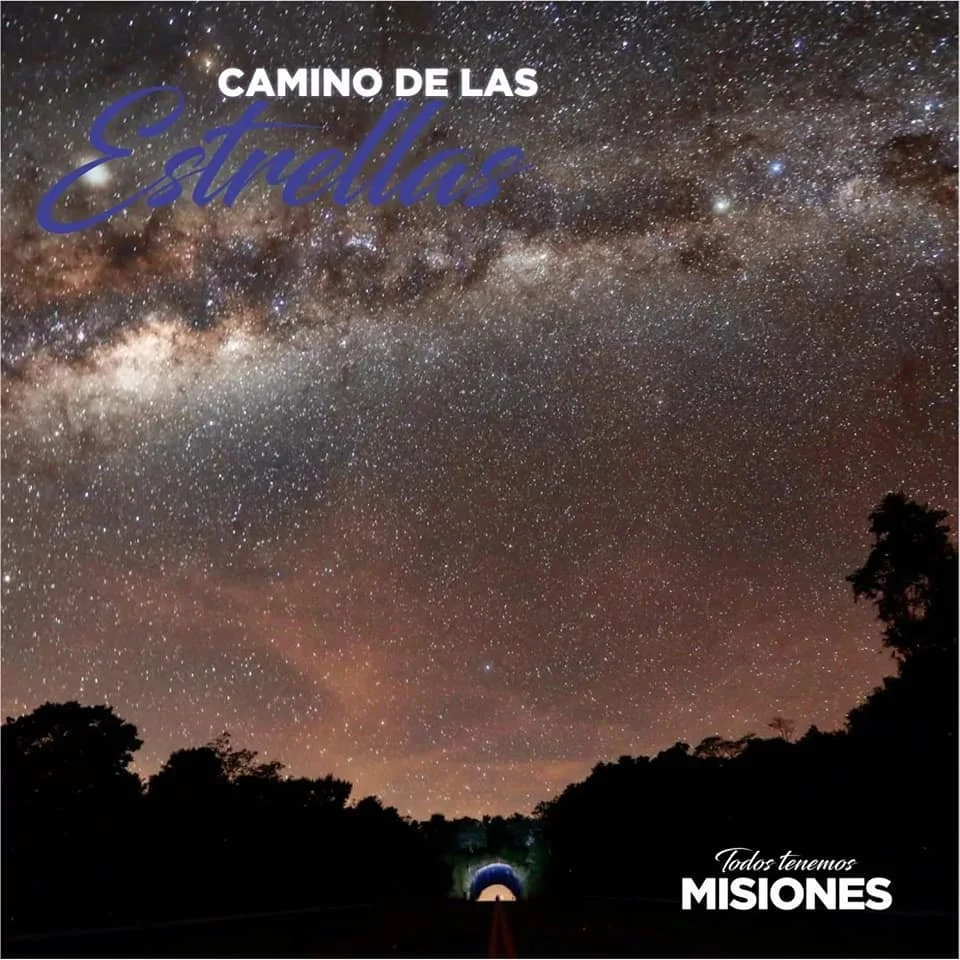
Misiones Hidden Tourism: Night lovers, Sunsets, Stars, and Insects
Night lovers. ŌĆśWe developed a circuit of spa treatments, massages and champagne, delivered right to the roomŌĆÖs door. Everything is designed for couples, for a relaxing nightŌĆÖ, Alejandro Sommer explains in a mysterious tone. His face lights up when talking about astro-tourism, his speciality, a circuit that ends with a tempting proposal: the Birra L├Īctea, a clever play on the words beer and Milky Way in Spanish. Natalia Cornazzani brings up the stars and the dark night, tourist attractions on which the ŌĆśGuaran├Ł SkyŌĆÖ proposal was built. This activity began in Salto Encantado and is on its way to being replicated in other parts of the province, particularly up north, although it has recently opened a new chapter with a Sunset Experience at Santa Ana de la Cruz Theme Park. Alejandro and Natalia are both ideologists of a new tourism trend in Misiones, generating offers that complement its natural attractions. This story began during the first Sunset Experience held in the Santa Ana Theme Park, with the company of Daniela Ayala, an insect specialist and one of the key guides to discovering the secrets of MisionesŌĆÖ biodiversity.
Daniela, a professional at the School of Exact Sciences, explains that out of ArgentinaŌĆÖs 1200 species of diurnal butterflies, 960 are found in Misiones and 460 are endemic to the province. Keeping up with her passionate talk about insects is no easy task, a story of metamorphosis from caterpillars to butterflies and pollinating worms. She explains that in Misiones, besides the famous ŌĆśstick bugŌĆÖ, there is also a ŌĆśleaf bugŌĆÖ, and a mantis ŌĆĢa praying mantis with the ability to camouflage itself in the environment, just like the stick bugŌĆĢ that cannot be found in other geographies. The professional stresses that promoting entomology does not only benefit tourism but also encourages the protection of species, considering that in the past people would come from Europe, Asia or Chile to ŌĆśliterallyŌĆÖ steal insects and sell them to museums or private collectors.
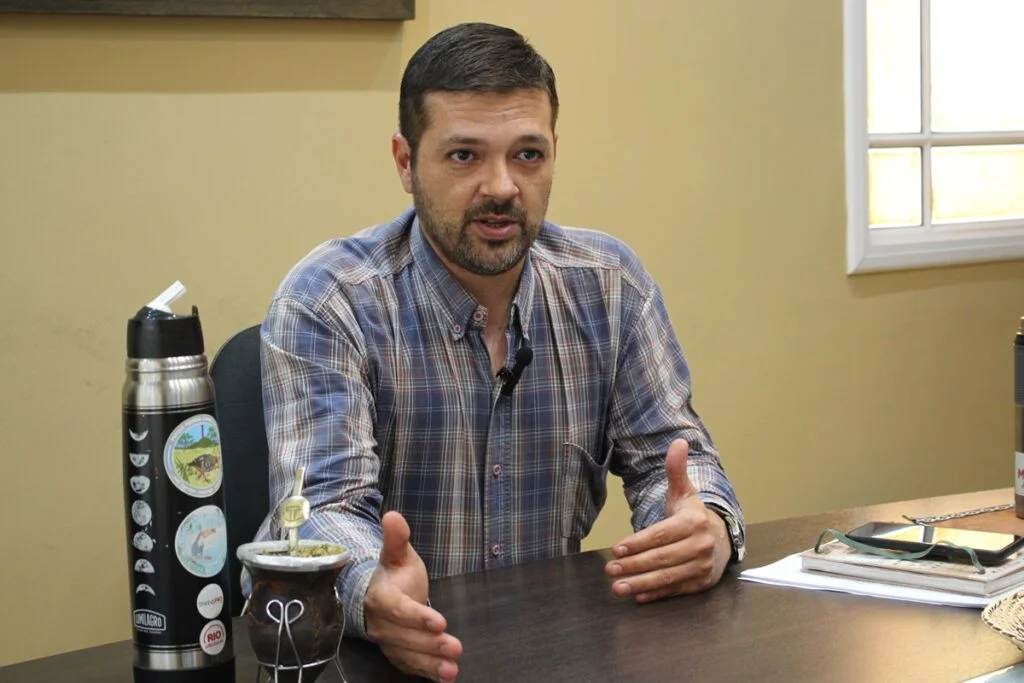
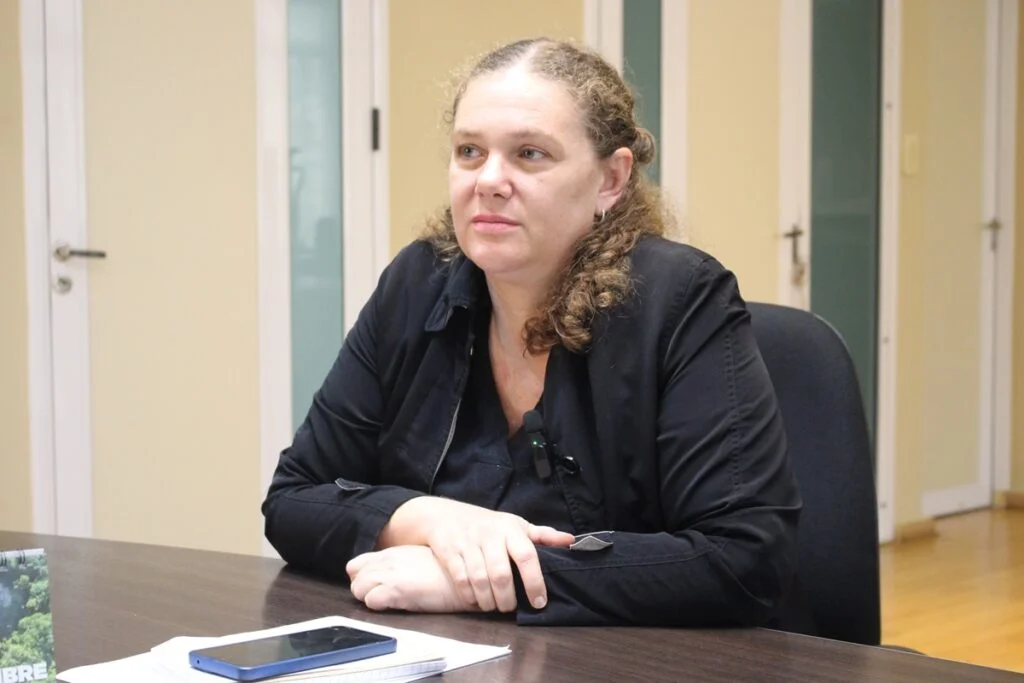
Sommer is from Misiones and Cornazzani from Ituzaing├│, in the province of Corrientes, but they both studied at the School of Humanities and Social Sciences of the National University of Misiones. They are now part of Minister of Tourism Jos├® Mar├Ła Arr├║a’s team, which champions these initiatives. The Minister stresses that these options emerged as a defence mechanism to leave behind the paralysis caused by the pandemic.
ŌĆ£In 2020, when the pandemic struck, we had started the ArgentinaŌĆÖs Natural Route project. Using it as our foundation and adapting it to MisionesŌĆÖ rainforest, the Minister told us: ŌĆ£Either we stay locked up or we go out to seek new tourism proposals for when the doors reopen.ŌĆØ On that note, the ecotourism team started to generate different products tailored to MisionesŌĆÖ rainforest. We now have seven of these offers. One of them is Camino de las Estrellas (Path to the Stars). Alejandro joined us that year, and we worked hard on that, on the first product that came out, which was Cielo Guaran├Ł (Guaran├Ł Sky). We also worked on promoting the natural protected areas and, at the time, Salto Encantado as an emblem, associated with the Cielo Guaran├Ł experience. We have this law to promote dark skies and raise awareness about biodiversity and the sky,ŌĆØ Cornazzani explains.
The offers have a distinctive feature: they are not aimed at the masses. ŌĆ£They focus on a specific segment and are conditioned by capacity,ŌĆØ Sommer explains. ŌĆ£That’s why we talk about ecotourism, we don’t talk about mass tourism, but about a segment, an audience, ecotourism itself already seeks that natural environment. ItŌĆÖs so sustainable that even during a fire emergency and with all the management plans required, we are allowed to build fires inside the Salto Encantado Park. But why? Because we bet on the cultural interpretation of the tatachina, the smoke that comes out of the fire and represents the connection between earth and sky. We had to explain this at the Government House, and the Ministry of Ecology. Even if the public doesn’t realize, there are fire extinguishers, there is water, there is a whole contingency plan to do this, and it is planned for only 20 people. Let alone when we start talking about entomotourism: we are generating a stimulus in a natural environment that is not used to it. We cannot overcrowd it, but we can focus on the quality of the product because it is designed for only a few people. The offer that this Path to the Stars proposes is to take advantage of MisionesŌĆÖ rich natural, cultural, tangible and intangible heritage. This is why we work closely with parks and the Jesuit Path in the south of Misiones, with a gastronomic circuit towards the centre, and everything related to entomotourism or bio-astronomy in the north. We propose segmentation. We have Cielo Guaran├Ł in Salto Encantado, and now Santa AnaŌĆÖs Sunset is being developed. The projects are different according to the different audiences. A law was also passed that allows us to evaluate the land and see what we can do, what we can offer, without taking into account all the interactions between the different organizations,ŌĆØ Sommer says.
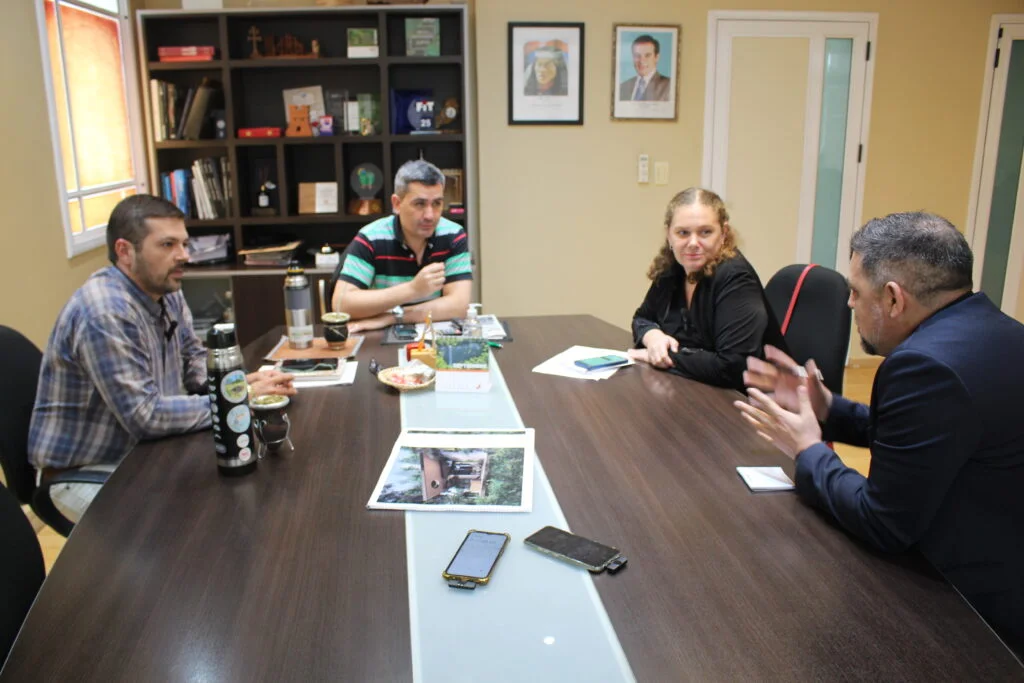
And the idea is to have offers in the whole province…
Cornazzani: We want to focus on different points. As Alejandro was saying, the cultural aspect and this new Santa AnaŌĆÖs Sunset product ŌĆĢto appreciate nightfallŌĆĢ in the south, bio-astronomy and birds in the north of the Andresito and Grand Iguaz├║ areas ŌĆĢfor a very specific public that travels to the lodges to do birdwatchingŌĆĢ. And the well-positioned Salto Encantado where weŌĆÖve been working with a community for more than a year; this is an added value because the Yvytu Por├Ī community is already a leading figure of this activity.
How has the public’s reception been so far?
Sommer: Well, in terms of turnout, we need more. We have an agenda, we have requests for activities from all directions and we have to understand that we are working with various sub-secretariats of the Ministry and with the National Government to define the profile of the guides. We have to understand that this is a tourist activity with applied technical knowledge, which is the basis for our Active Trail activities. Regarding the offer, we have already positioned ourselves in Garuhap├®, Esperanza, Andresito, and the Urugua-├Ł Park.
What about astro-tourism?
Sommer: ThereŌĆÖs significant demand for more and more activities, people ask for more, but we donŌĆÖt have enough guides.
The idea is for everything to be of good quality.
Alejandro: Quality is our priority, not quantity.
Cornazzani: As we work in protected areas, we have to be careful. We have a permit for intervention granted by the Ministry of Ecology that allows us to be there at night at certain times of the year. But I also think it is interesting to add that, for example, with ArgentinaŌĆÖs Natural Route, we have obtained credits for the Urugua-├Ł Provincial Park, where there are going to be a series of interventions and projects. One of the ideas involves building a tower to be used not only for bird watching, but also stargazing. So, let’s say it’s a whole experience of contemplation and an integration of activities that we can now translate into something physical.
Is this going to take place at Lake Urugua-├Ł?
Arr├║a: No, itŌĆÖs in the Urugua-├Ł Provincial Park, in Andresito. Not in Lake Urugua-├Ł. It’s in the Uruz├║ district.
Sommer: This tower would be above the canopy of the trees, designed precisely for birdwatching and stargazing. Most importantly, it is also consolidated for all types of tourism: scientific tourism, regular tourism, eco-tourism, and much more. What is most interesting about the tower is its accessibility. It has an excellent design.
Cornazzani: And we are also developing visits to observe a natural salt flat. WeŌĆÖve already met with the architect in charge of that project. We are improving the signage to target it for a more scientific public. When Argentina’s Natural Route began to divide different destinations and so on, we said: ŌĆ£When the Iguaz├║ National Park reopens after the pandemic, we have to take care of the capacity, so as not to reduce quality. How can we diversify and spread out tourist flows, as in other places in the world?ŌĆÖ You have to obtain a ticket in advance, to plan what you are going to do around Iguaz├║. This is an option for a more specific audience, because itŌĆÖs targeted at scientists, or at people who like to be in touch with nature.
Arr├║a: However, you also have the experience of the Awasi people, that is to have tourists in the rainforest. They take people to the park, they do activities. I was talking to the manager a few days ago and he said that these initiatives add up, because we are going to have more time for our tourists on siteŌĆØ.
Cornazzani: Many activities are contemplated, such as restaurant services, and the idea is to also charge a bit more. Because by taking care of the salt flat, you will be able to observe the tapirs. However, no more than ten people would have access at specific times. This natural attraction is being appreciated, with a location where people can take photographs without disturbing the tapirs. It’s a different kind of interaction…
Jos├® Mar├Ła: But the tourist or visitor should not disturb the animals. Everyone must be quiet and silent. There should also be a security system in place. We are talking about four or five people at a time, no more than that.
Cornazzani: The idea is for them to stay for three hours, so the public waits patiently for the animal to arrive.
Arr├║a: The tapir goes to the salt flat around four or five in the afternoon, and at eight at night, and people can then take the photos.
What are the experiences like with the tourists who come to spend the night?
Sommer: They are surprised, since this isnŌĆÖt exactly the etymology of the word tourism. We offer experiences. The diversity of the offer means that if the tourist is more of a hardcore scientist, they can opt for MisionesŌĆÖ Observatory. On the other hand, when they are seeking these astro-tourism experiences, they are aiming to see a different side of Misiones. Because half of the life in the province takes place at night. What happens in the province at night? We are talking about entomotourism, nocturnal birds, butterflies. Why was the value of Santa Ana enhanced? Kilometres further down, the Macaria Garupa, which is the new species of nocturnal butterfly, was discovered. Some kilometres further up, we found the Mbopicua teyucuarensis, which is the new species of bat. We are in a very rich transitional area, you know?
Jos├® Mar├Ła: For example, San Juan Park, the place where the highest number of birds was recorded in Argentina during Bird Day. That day, 240 species were observed. It is the number one bird watching post and itŌĆÖs a transitional area between grassland and rainforest. Besides, the park is still relatively unexploited. ThereŌĆÖs no intention to exploit it and have ten buses going there. If tomorrow we start publicising this place and it catches the attention of agencies, maybe people will start coming, you know? WeŌĆÖll need to have portable toilets and tents for food. It would be a revolution. After two years, it will no longer be a sanctuary.
Cornazzani: Biodiversity would be destroyed.
Jos├® Mar├Ła: We need to be very careful, very punctual, it cannot be overcrowded. Nowadays tourists want to be the first ones visiting the place. Why do influencers exist? Where do influencers come from? They come from there. They tell you about their experience and then you say, ‘look at what this person experienced’. Influencers who come to Misiones talk less and less about going to the Iguazu Falls because everyone has already visited the Falls. Except when the river flow is very high or when the falls are very dry. But unless there is something eye-catching and unique, people say: ‘no’. Even to the Mocon├Ī itself. Everybody is looking for that unique experience.
Cornazzani: We are looking to slightly spread out the offer in the Grand Iguaz├║ area towards Andresito with all these options for ecotourism, which is our area of concern. This will give life to the Urugua-├Ł Provincial Park. We are also working comprehensively to offer the destination to travel agencies. Because the place may be very good, but it has to enter the market first. That is to say, the Iguaz├║ travel agency has to know that at 5 a.m. such and such species come out and then take the visitors there. ItŌĆÖs important to target the offer a little bit.
Sommer: Always speaking from the ecological point of view, we aim at achieving a triple impact, focusing on how the activity affects the local economy. Precisely, the idea is that we lean back, in some way, on the parks. We are creating an attraction that can benefit all the enterprises, while, at the same time, using local resources. Going back to Salto Encantado, the gastronomic menu is local, so the carbon footprint is zero, because you consume what is produced directly in nearby areas. Simultaneously, it directly affects the Guarani communities since there is a contribution, an economic spillover. Those who participate in the activity get vouchers for local lodging, the goal being promotion. For example, the Yate├Ł Interpretation Centre in Andresito includes all the lodges in the area but the place is neutral, so that tourists have a closer offer.
Cornazzani: We always have our sights set on having government-led initiatives. Because obviously many times we were called, or even Jos├® Mar├Ła was told: ŌĆ£You can come and do the activity for us.ŌĆØ No, the activity is done in a municipal place, or in a provincial park to give it value. And then the others run the lodges in Villa Salto Encantado, they feed off that and on Fridays they already have an activity to offer. Bookings are managed according to the activity.
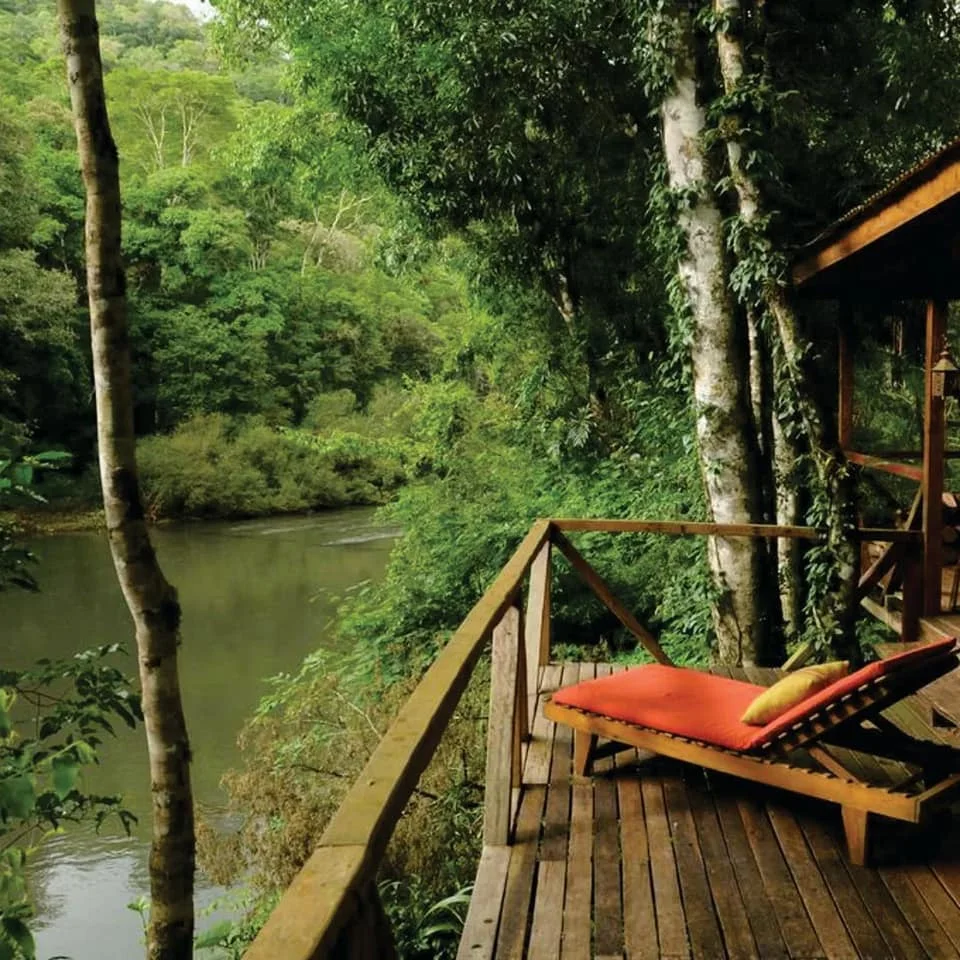
Arr├║a: Or many times they tell us: ŌĆ£We want to do it here.ŌĆØ And we have technicians who instruct them on how to do it. They advise them on buying a telescope and hiring a guide.
Sommer: In fact, many lodges have already started doing it in the Mocon├Ī area.
Arr├║a: Santa Ana is also doing it here, Al Kamar is starting to set up observation areas.
Cornazzani: Our idea is for the Government to set trends and direct the offer so that private enterprises can capitalise on them. But we, as the Government, provide the tools of infrastructure and knowledge.
How did the Night Lovers proposal come to life? And the Birra L├Īctea?
Sommer: They were designed based on satisfaction surveys. What called their attention? What brings them here? People are looking for that diversification of the offer, couples are looking for an evening together, to celebrate an anniversary, or to have a moment of intimacy. So the story, beyond the cultural aspect, has to do with that encounter, reconnecting with your partner, being in contact with nature. ThatŌĆÖs something that all these lodges provide, an intimate moment amidst nature as a couple. ThatŌĆÖs what we offer. The details are provided by agencies. People have to go and discover.
Arr├║a: When we started the second administration, in 2019, I remember, at the end of 2019, the rainforest was recognised as a Natural Wonder of Argentina. The Iguaz├║ Falls are already a Wonder of the World and the added value of the Falls was the rainforest -itŌĆÖs environment and how the space was preserved for the Falls to stand out. The Iguaz├║ Falls are not a Wonder of the World because of the waterfalls alone, there is a whole context why, and all these elements were taken into account for the upgrade. So, I felt at the time that we owed a debt to the rainforest. Then the Mocon├Ī appeared and it also wanted to be a Wonder. We supported both of them, but we bet more on the rainforest because it also seemed to us a transversal product in Misiones. It was the longest path, because the shortest path was to give the Mocon├Ī visibility and promotion. The big challenge was this one, because we only had the rainforest and there was nothing set up. There was no rainforest experience. What do the Falls have? There is an entrance fee, a circuit, a little train, people can go on the great adventure or the rubber boat, and even eat there. At night you can go on the Moonlight Tour, you have everything you need. In the Mocon├Ī thereŌĆÖs a restaurant, a trail and maybe we could recover the walkways. But the rainforest has no amenities and people had this very narrow vision of ecology, coming not from the Ministry of Ecology, but from the ecologists, that nothing should be touched. The issue was how to approach the ecologists and tell them: ŌĆ£All that you take care of and preserve, costs a lot of money and if we do not raise awareness about its cost, we have to generate an income so it can be sustained.ŌĆØ This income is not generated by clearing land or planting soybeans. If sustainable and profitable business units are generated, surely many people would say: ŌĆ£I also want to provide bird watching or astro-tourism in my reserve.ŌĆØ That is why we have reached this point. Misiones has seven of the eight products of the Natural Route.
Is there anything missing?
Sommer: Dinosaurs.
Arr├║a: Yes, dinosaurs.
Cornazzani: We updated everything proposed by ArgentinaŌĆÖs Natural Route. Furthermore, the pandemic really strengthened us as a team, within the Ministry, and it also helped us determine what we were looking for. It also gave us the opportunity, the Natural Route, to start. We knew that once the doors opened, people would want nature.
Sommer: Today, Misiones is a benchmark. There is a strategic plan for sustainable tourism, and we are already mentioned in bibliographies for the work we have been doing.
Arr├║a: This set of ideas comes from the MinistryŌĆÖs team. I always knew that there was very good human material here, a very good mindset. We just had to get them moving a little bit more and make them feel part of it. It’s not that the Minister comes and gives the order: ‘we have to do this’. The truth is that, during the pandemic, as she says, it was a feeling of emptiness for everyone. We didnŌĆÖt know what to do, which way to go or where to start. At one point, I told them: ŌĆ£Guys, this is no longer the Ministry of Tourism. We are now firefighters. We are in a fire. You have to do this, you have to do that. HereŌĆÖs what I know. But the other thing, how do we get out of this? You tell me how we can do it.ŌĆØ
Cornazzani: We have to be creative, he said. In fact, our post-pandemic presentations were butterflies, and I said, ŌĆśI don’t know if he’s going to dare.ŌĆÖ And he adds, “We’re going to transform from caterpillars to butterflies.ŌĆØ So we went out to showcase our province to Buenos Aires.
Arr├║a: We put together a very nice group of people. Together we were able to reshape the concept of tourism. And that is interesting because the strategic plan gives a guide, like a GPS. In addition, there are two innovations with the PET (Misiones’ Strategic Plan for Sustainable Tourism.) ItŌĆÖs going to become law. And we have already signed an agreement with the Natural Route to modernise all signage and introduce a new brand for Misiones.
Cornazzani: The photographs donŌĆÖt show the place, but they show the species people can spot in the area. ItŌĆÖs like a new concept to invite tourists to say: ŌĆ£I want to see that there.ŌĆØ
Arr├║a: ItŌĆÖs a poster showcasing experiences rather than advertising information.
This new conception of tourism made Misiones stop having low seasons. The saw effect is no longer displayed in the occupancy indicators. Previously, the number of visitors to the Iguaz├║ Falls was measured to evaluate the tourist season. Today itŌĆÖs still a key indicator, but it’s not the only one, and that allows us to project growth throughout the province.ŌĆ£We are always looking for quality, we want to grow by no more than 8 or 10% year-on-year; otherwise, the province’s load capacity will collapse. ItŌĆÖs one thing if it collapses and we have to open additional accommodation during the Carnival, or on July 9 ŌĆĢthe first week of the winter holidaysŌĆĢ, or during the TC ŌĆĢa road racing circuitŌĆĢ. But the idea is for this not to happen and to instead have a regulated activity. For that reason we seek to diversify the options and for people to stay for more days. Not just a two-day getaway to Misiones, but 5, 6, 8 days, even 10 days. We are looking for tourists to stay for 10 days, that is PET’s goal. We estimate two and a half million, three million tourists at the most. We have 3 million hectares and 3 million tourists. In 2018 we reached 1.4 million. It was the first time the number of tourists surpassed MisionesŌĆÖ population.. We had 100 thousand more tourists than inhabitants. This year we will close the season with two million tourists. But we are not interested in growing much more in terms of volume,ŌĆØ explains Arr├║a.
.-.-.-.-.-.-.-.-.-.-.-.-.-.-.-.-.-.-.-.-.-.-.-.-.-.-.-.-.-.-.-.-.-.-.-.-.-.-.-.-.-.-.-.-.-.-.-.-.-.-.-.-.-.-.-.-.-.-.-.-.-.-.-.-.-.-.-.-.-.-.-.-
Traductores Jos├® Roa, Daira Dos Santos, Agustina Cusoilito, Valentina Mior y Rosario Maciel
Tecnicatura Universitaria en Traducci├│n e Interpretaci├│n en Ingl├®s – UCAMI
Correo: c.extension@fch.ucami.edu.ar
